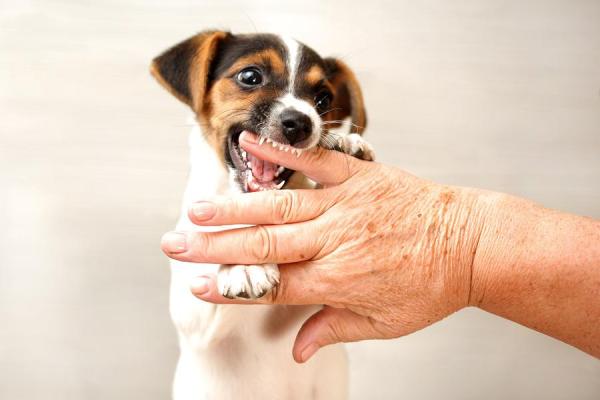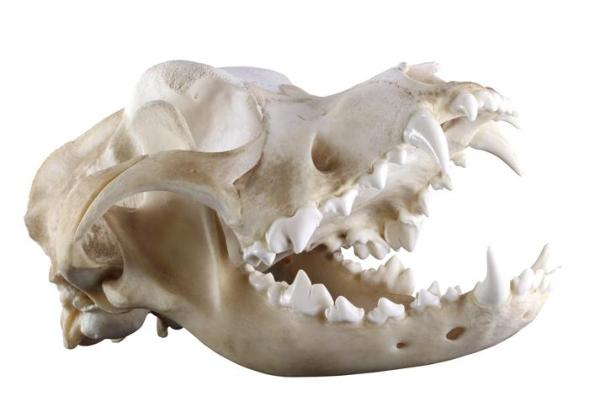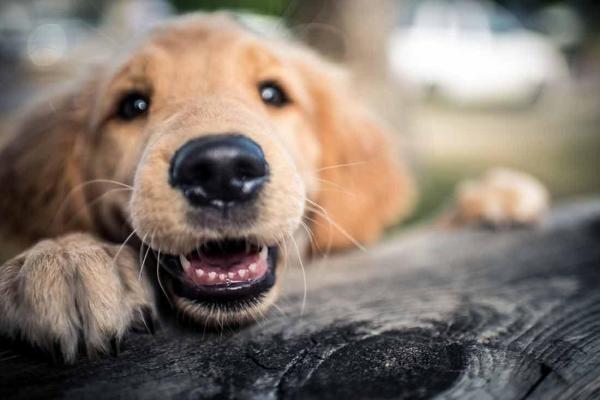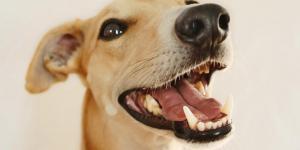When Do Dogs Lose Their Baby Teeth?



See files for Dogs
Puppies, as with human babies, do not have any teeth at birth. Eventually newborn puppies will develop one or two deciduous teeth (also known as milk teeth) which are only partly developed and temporary. During breastfeeding, puppies will exclusively suckle from their mother's breast and don't require solids. During the first weeks of life, their milk teeth will develop more, but as they are temporary, they will eventually lose them. This final dentition will be with the dog for the rest of their life, without any replacements growing if they fall out.
The loss of baby teeth in dogs is a similar process as to what happens in humans. However, their morphology is very different, as is their developmental timeline. When do dogs lose their baby teeth? This loss of puppy teeth occurs anywhere between 3 and 9 months of age. AnimalWised looks into the development of canine teeth and also what dog guardians can do to keep them strong.
Dentition of puppies and adult dogs
The provisional dentition (i.e. when they have a complete set of baby teeth) is complete when they have 28 teeth in total. These 28 milk teeth are made up of:
- 4 canines (2 upper and 2 lower)
- 12 incisors (6 upper and 6 lower)
- 12 premolars (6 upper and 6 lower)
The deciduous teeth of puppies are not the same as their adult teeth. not only do they have a different composition, but their appearance is different. They are smaller and sharper than their adult teeth, the later being strong and more rounded.
The first appearance of teeth in puppies is very important for the weaning stage. This is when the puppies change from liquid breast milk alone to beginning the consumption of solids. There will usually be a time when they have a little of both. After this, the puppies no longer need to rely on their mother for nutrition and will begin to fend for themselves.
While the milk teeth are useful for the puppy to begin eating solid foods and adapt to adult food, they can't be too strong. They need to loosen and fall out. This is one of the reasons puppy food is different from adult dog food. Harder food is eaten as an adult as it helps to clean the dog's teeth. It is also a reason we need to be careful when playing with puppies or giving them bones. As their teeth are softer, we can't play with them too roughly.
A full set of adult teeth consists of 42 teeth in total.

Milk teeth in dogs
Every dog is an individual organism with their own unique metabolism. For this reason, there is no specific predetermined age at which a puppy will get their deciduous milk teeth. However, generally, a puppy's milk teeth will start to develop somewhere around 15 to 21 days of life. At this time, puppies will also start to open their eyes, develop hearing, walk and explore their environment. All of these processes are gradual.
During this early period of life, we can see the appearance of upper canine and incisor milk teeth. A few days later, usually between 21 and 30 days of life, we can see the same teeth growing on the bottom row. It is essential that the human guardians of a dog check their puppy's teeth during this developmental stage. They need to ensure the teeth are growing properly as it is important to bring the dog to a vet as soon as any complications are witnessed.
Additionally, it is essential to take your puppy to the vet during these early stages. There they will examine the puppy's mouth to ensure their teeth are growing in as they should. They will also check for any other general health conditions such as deafness or the presence of parasitical infestation. Vaccination and deworming schedules will also be implemented.
Primary tooth loss in dogs
After about 3 months of life, the puppy's primary teeth begin to wear and fall out of the puppy's mouth. This occurs because the permanent adult teeth are slowly erupting below. The adult teeth wear down the roots of the teeth as they begin to erupt out of the gum. The crown (the visible part of the tooth) then breaks away and falls out. Again, it is important to remember that each dog is an individual and the timing of tooth development can vary. When the dog i s about 4 months old, we can observe the onset of the upper and lower central incisors.
At around 8 months of life, the puppy will go through a more definitive change with the growth of canines and incisors. This second stage is known as the permanent teeth's ‘eruption’, a relatively slow process which results in the temporary milk teeth falling out. It can extend from 3 to 9 months of age, depending on size, breed and health of the individual dog. It is possible for the adult teeth to keep growing for the first full year of their life.

Relieve teething pain in dogs
The loss of temporary teeth in dogs is a natural process which all dogs should go through. In general, the only symptom a puppy should be discomfort caused by the eruption of adult teeth through the gums. Eventually, this discomfort may turn to pain and may even be accompanied by some inflammation in the gums.
Do you know how to relieve tooth pain in dogs? The ideal thing we can do is to offer teethers or soft toys appropriate for their age. It feels good for the puppy when they bite down on things as it relieves pain. However, if the toy is too hard, they can damage the gums and compromise the proper development of teeth. This is why bones are not recommended for dogs under the age of 10 months. Soft toys can also be refrigerated to help with inflammation.
It is also essential for you to routinely check the dog's mouth during the eruption of their permanent teeth. One of the most common problems is when the change occurs, the temporary milk tooth does not fall out properly or fails to detach itself from the gum. This prevents the permanent adult tooth from erupting properly.
When this happens, the puppy usually presents with a more intense pain than can be expected. Displacement of the tooth can occur. These leads to difficulty in chewing food and consequent digestion problems. It can also cause wounds and inflammation of the gums (gingivitis) due to inadequate growth of the teeth.
Therefore, if your dog does not get their teeth or you observe injuries during this process, don't hesitate to consult a veterinarian. In many cases, a small surgical intervention may be necessary to properly detach the temporary piece of tooth and allow the full development of the adult tooth.
How to know the age of a dog by their teeth
Did you know that it is possible to estimate the age of a puppy by their teeth? As we have shown, the teething process which dogs undergo present various stages of development and growth. This is why we can roughly calculate the puppy's age by looking at their teeth.
For example, if a puppy is less than 15 days old, it probably won't have any teeth. However, after 3 weeks of birth, the upper canine and incisor milk teeth start to appear. They are thinner and more square than their adult teeth. When they are about to complete their first month of life, we can see the emergence of these teeth in the lower jaw also.
If the puppy is about to reach 4 months of life, we can observe the eruption of their central incisors in both upper and lower jaws. This indicates their permanent dentition has already begun to appear. After about 10 months of life, all the permanent teeth should be present, even if they are still developing.
Around the first year of age, the permanent dentition should be complete. These teeth should be very white in appearance and have no tartar. At this age, their incisors will no longer be as square as their temporary teeth. Instead they will have rounded edges in a ‘fleur de lis’ shape which you can observe in the picture below.

If you want to read similar articles to When Do Dogs Lose Their Baby Teeth?, we recommend you visit our Facts about the animal kingdom category.








